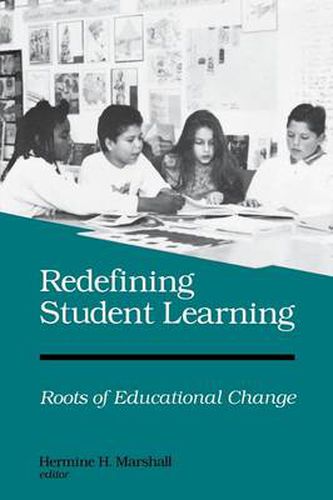Readings Newsletter
Become a Readings Member to make your shopping experience even easier.
Sign in or sign up for free!
You’re not far away from qualifying for FREE standard shipping within Australia
You’ve qualified for FREE standard shipping within Australia
The cart is loading…






Presenting an alternative view of where educational reform must begin, the contributors contend that we must begin with rethinking the nature of learning and with newer knowledge about how students learn. Only then can the conditions that support the type of learning that will create productive citizens for the 21st century be considered. The book begins with the need to redefine learning by increasing awareness of the relationship between how students learn and efforts to improve schools. The next seven chapters present examples of classroom research to provide a glimpse of what happens when teachers implement newer views of learning based on how students actively construct knowledge in meaningful and multi-connected networks. These examples serve to provide clues about what learning may look like in classrooms with these goals and to raise questions about factors that support and/or constrain teachers in providing opportunities for students to extend understanding to solve complex problems.
$9.00 standard shipping within Australia
FREE standard shipping within Australia for orders over $100.00
Express & International shipping calculated at checkout
Presenting an alternative view of where educational reform must begin, the contributors contend that we must begin with rethinking the nature of learning and with newer knowledge about how students learn. Only then can the conditions that support the type of learning that will create productive citizens for the 21st century be considered. The book begins with the need to redefine learning by increasing awareness of the relationship between how students learn and efforts to improve schools. The next seven chapters present examples of classroom research to provide a glimpse of what happens when teachers implement newer views of learning based on how students actively construct knowledge in meaningful and multi-connected networks. These examples serve to provide clues about what learning may look like in classrooms with these goals and to raise questions about factors that support and/or constrain teachers in providing opportunities for students to extend understanding to solve complex problems.